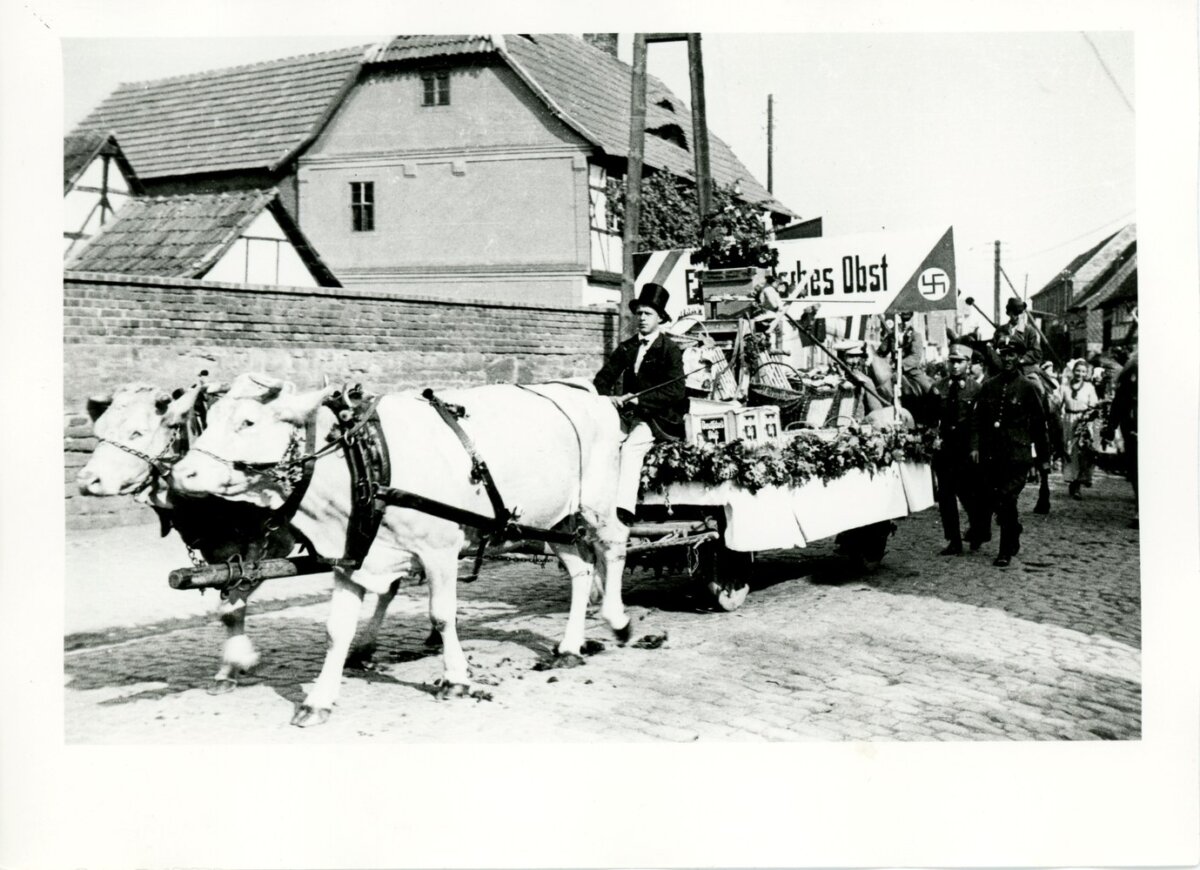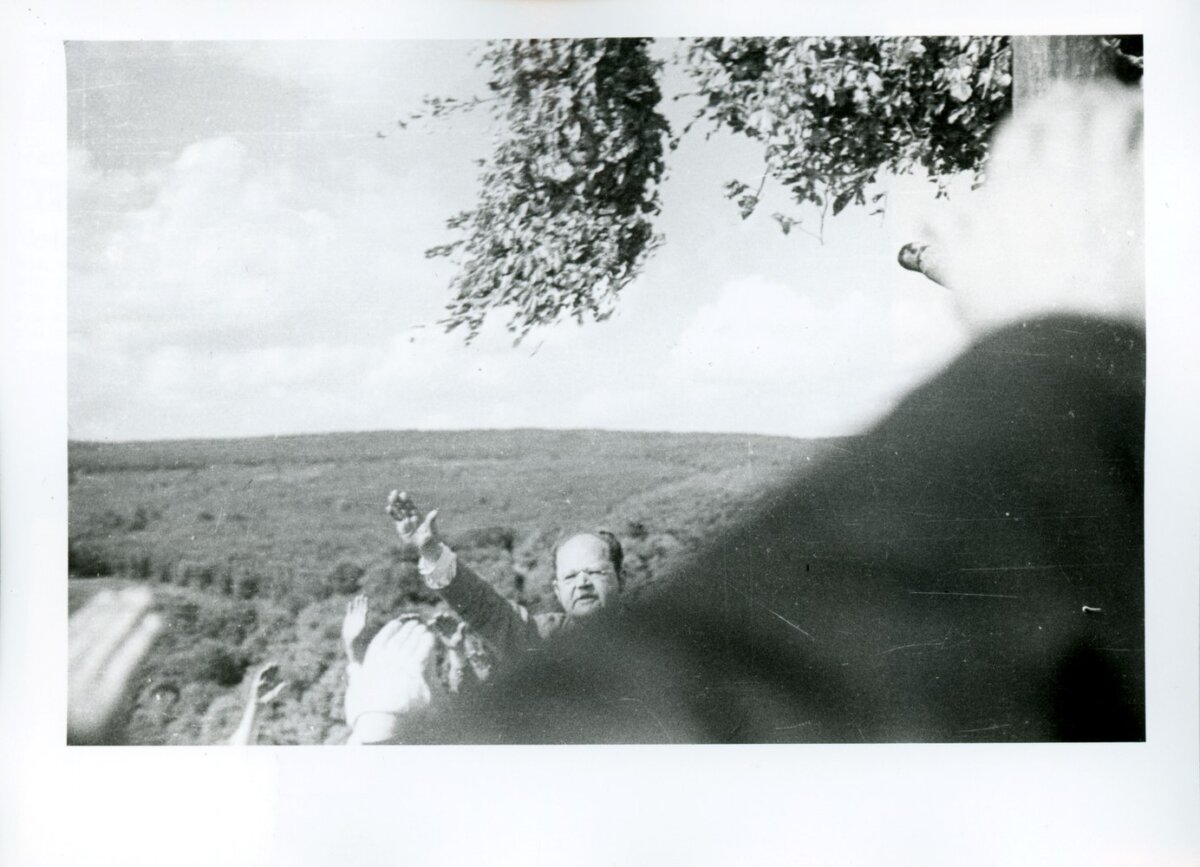Photos from the Hahne-Niehoff archive provide insights into regional festivals and their folkloristic recording from the 1920s to the 1940s. They show the connection between folklore and the rise of National Socialism.
A float was decorated for the parade. At the back is a hand-painted sign with a swastika flag and the invitation: ‘Eat German fruit’. The photo from 1933 is one of a total of 39,000 images from the Hahne-Niehoff archive, which is stored at the HU’s INSTITUTE FOR EUROPEAN ETHNOLOGY. The Humboldt Laboratory in the Humboldt Forum shows objects from the archive and thus takes a critical look at the socio-political role of ethnology. After all, Hans Hahne and Heinz Julius Niehoff were by no means neutral observers, emphasises European ethnologist and historian Franka Schneider, who is co-curating the archive exhibition. On the contrary: with their research, they consciously promoted the rise of National Socialism.
The prehistorian and director of the State Institute of Prehistory in Halle, Hans Hahne, had a clear political stance that was characterised by racism and anti-Semitism. ‘We would say today that he was a völkisch scientist,’ says Franka Schneider. It was about the comprehensive photographic inventory of ‘German customs’. Together with his colleague Heinz Julius Niehoff, a photographer and documentary filmmaker, Hahne mainly documented festivals, traditional costumes and rural architecture between 1920 and 1945. The two mainly travelled the area around Halle, exposing more than 1,000 35mm films in the process. ‘They also pursued the political agenda of visually producing the “own” and thereby stabilising it,’ explains Franka Schneider. One of Hahne’s aims was to construct a supposed continuity between Germanic and German customs. ‘He was one of those who, as early as the beginning of the 1920s, popularised the völkisch ideas of ‘German ethnicity’ and ‘Nordic blood heritage’ and later harnessed them for National Socialism,’ she explains.
Hans Hahne himself gave speeches at the festivals and spread his nationalist views on site. How little he differentiated between his role as a scientist and his National Socialist views is also documented in photographs. In one photograph, his right arm can be seen thrusting into the picture from behind to give the Hitler salute.

